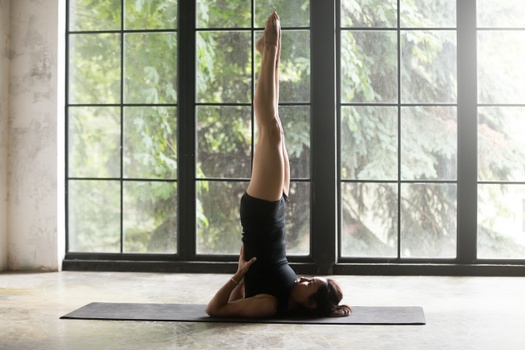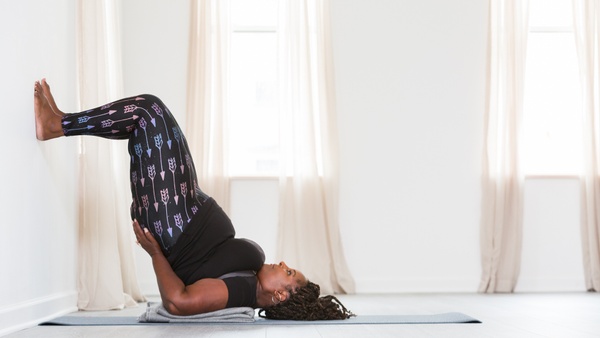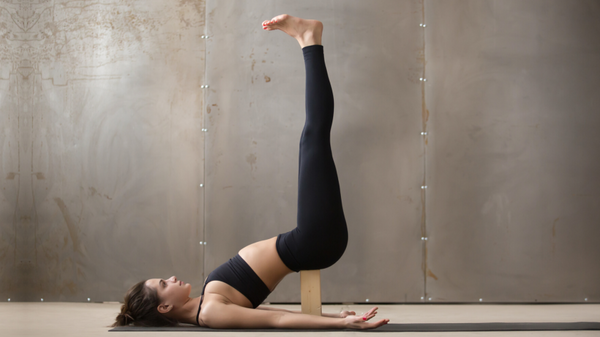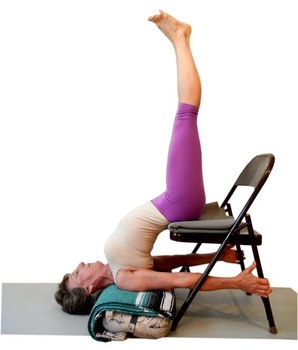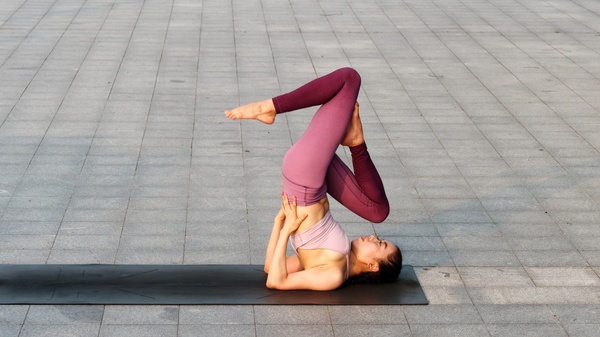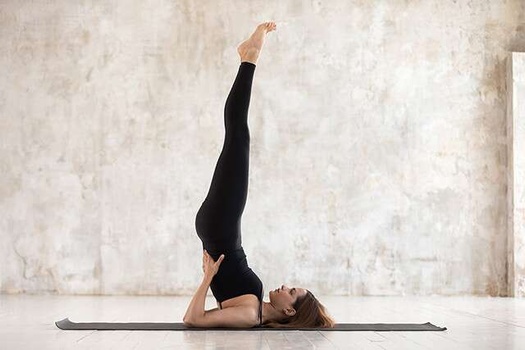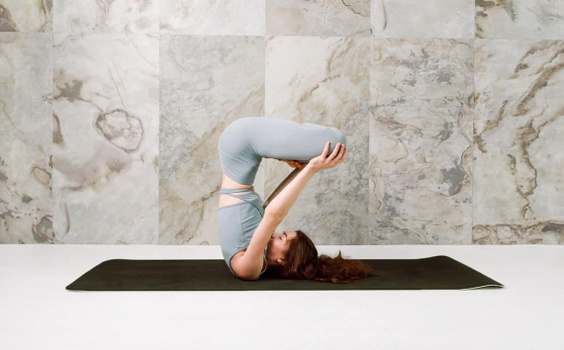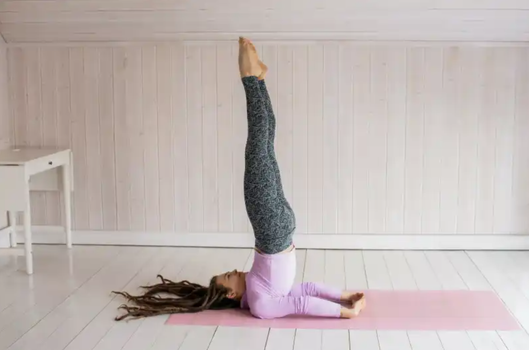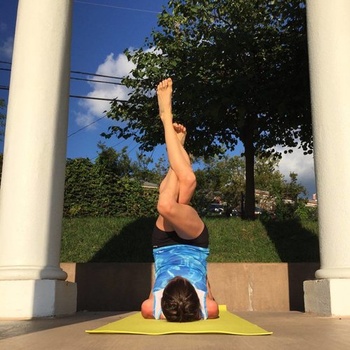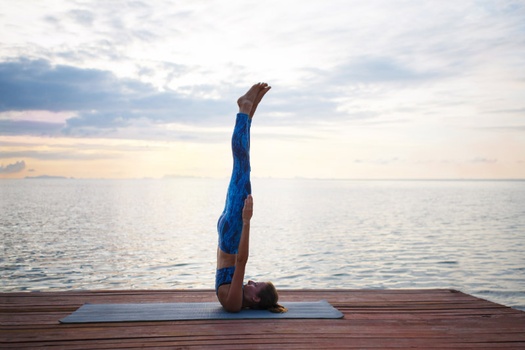Anyone who wants to elevate the level of their yoga practice can start performing Sarvangasana. Although it’s not highly suggested for beginner yoga practitioners, you can still begin to build strength with shoulder stand posture modifications and variations.
So, before you start, read and learn about the four different parts of Sarvangasana practice below:
Part 1 - Preparatory Poses for Sarvangasana
Since Sarvangasana is one of the most challenging yoga poses in the Ashtanga yoga practice, it’s important to warm up your body first.
Let's look at three ways you can prepare the essential muscle groups for your Shoulderstand practice.
1. Setubandhasana (Bridge Pose) - Lie on your back and slowly lift your entire core up in the air. In this pose, you’ll support yourself with your hands, feet, and shoulders.
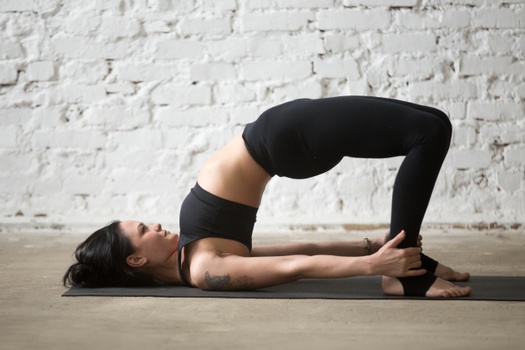
This pose will work on your shoulder, neck, and leg muscles to help you flow better into the final Sarvangasana practice.
2. Ardha Halasana (Half Plough Pose) - Lay down on the yoga mat with your back touching the ground. Now, lift both the legs up in the air.

Make an angle of 90 degrees with your legs, tuck your belly, and keep your entire core tight.
3. Halasana (Plough Pose) -
Continuing from Half Plough Pose, move to the full Plough Pose. Simply drop one leg to the back of your head and then drop your other leg into the same position and hold this pose here.
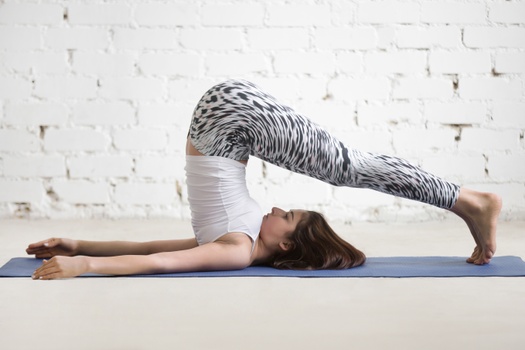
Make sure your alignment is correct by checking that your knees are placed on top of your ears in a straight line. This pose will activate all the essential muscles that work more extensively in the Shoulderstand.
Part 2: Step-by-Step Instructions to Perform Sarvangasana
Step 1- Lie on your back and bend your knees, with your feet flat on the mat and your arms relaxed at your sides.
Step 2- Keep both the arms flat on the ground and breathe normally at an average pace.
Step 3- Slowly lift your legs and hips off the mat until your legs are perpendicular to the mat like in Half Plough Pose.
Step 4- Now inhale, pressing down through your palms on the ground, and using your hands and triceps to lift and support your hips.
Step 5- Exhale completely and lift your lower back off the mat in a vertical straight line.
Step 6- Pull your shoulder blades into your upper back, keeping your shoulder engaged. Keep your breath constant and smooth.
Step 7- With your head flat on the mat, place your arms behind your back to support your core and legs as you hold yourself upright vertically.
Step 8- Hold this pose upright in the air for a few minutes and then slowly bring your legs and back to the ground again by releasing your hands from the back.
Breath Awareness:
Inhalation: Inhale deeply while lifting your back up.
Exhalation: Exhale while releasing the pose and placing your back on the ground.
Performance Duration for Beginners: Hold the Shoulderstand pose for 20-60 seconds.
Performance Duration for Advanced:
Hold the Shoulderstand pose for 1 to 3 minutes.
Part 3: Things to Keep in Mind
If you are trying the Sarvangasana for the first time, here are a few essential posture cues to be mindful of:
Don't rush into the pose: In the Shoulderstand pose, your shoulders, neck, and spine are very vulnerable. So it's crucial to keep your posture transition very steady and slow, rushing or jerking movement can displace the spine or neck, causing severe damage to the spine.
Use safety props around you: If you struggle with balancing your body upright during Sarvangasana practice, you can modify the pose with fluffy cushions or bolsters around you on the ground. This will ensure that you land safely even if your balance is not perfect.
Part 4: Relaxing Poses After Sarvangasana
Your body flexes at its maximum when you hold the Shoulderstand for longer durations. So it's important to perform resting counterposes to bring your neck and spine back to their original shape. Below are three different poses that will help you relax thoroughly.
1. Savasana (Corpse Pose): After your Sarvangasana practice, lie down with your legs and arms spread in a five-point star posture. Release pressure from each muscle group by sinking your body into your yoga mat.
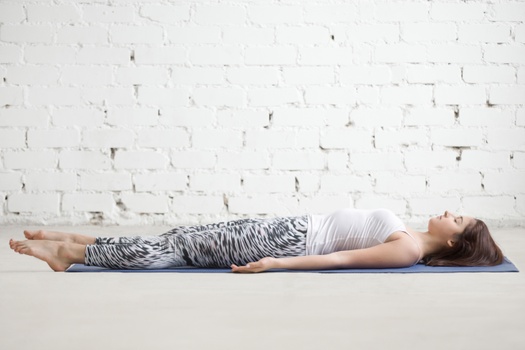
You can enhance your breathing pattern and close your eyes for a deeper release of tension. The corpse pose is a great resting counterpose because it helps your entire body relax after Shoulderstand practice.
2. Paschimottanasana (Seated Forward Bend):
After the Shavasana practice, raise your upper body and sit in a staff pose on your yoga mat. Keep your spine upright, engage your core, and start to slowly bend forward with a deep inhale.
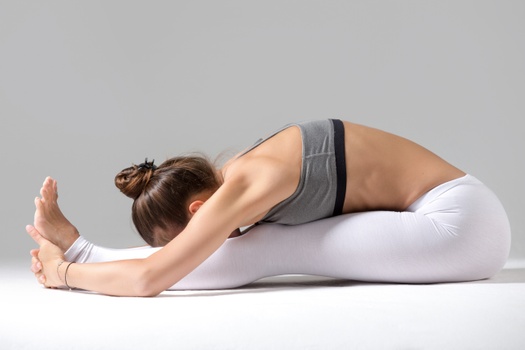
Once you touch your knees with your forehead, exhale and release any upper body tension by stretching your arms in front of both legs.
3. Balasana (Child Pose): Continue moving from forward bend into a tabletop position on your yoga mat. Slowly sit back on your shins and stretch both arms out front.
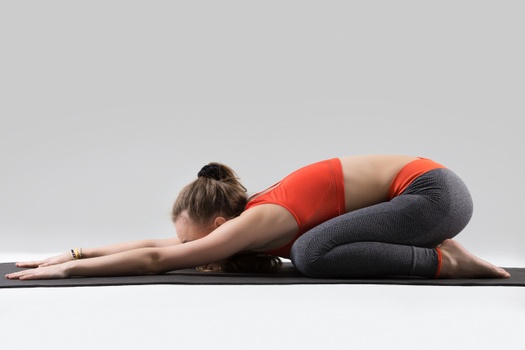
This pose will help you relax your spine, shoulder blades, lower back, and arms all at once after a long duration of Shoulderstand holds.
